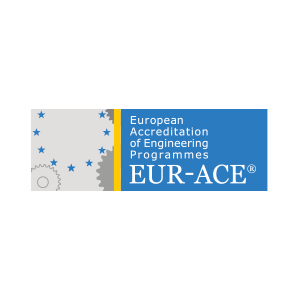Charged particle optics
Description
Objectifs
Charged particle optics (CPO) is a science that compiles under a common theoretical base all the laws governing the transport, focusing, mass/energy dispersion, etc. of charged particles that can be electrons, positrons, ions or molecules. It allows the description of the optical properties of all the usual individual optical elements (lenses, energy filter, magnetic sector, etc.) and thanks to the multiple combinations of these elements, it allows the creation of a wide range of tools for the characterisation of innovative materials. For years, applications in this field have been considerable: development of increasingly powerful electron microscopes, focused ion beams that have opened the way to nano-manufacturing, secondary ion mass spectrometers (SIMS), an essential tool for characterising dopants in semiconductors, and also large instruments such as synchrotrons and particle accelerators.For several years, the demand for engineers with solid skills in this field has been significant and has been increasing regularly.
Indeed, the companies providing state-of-the-art analysis instruments are in a permanent race to innovate, on the one hand to meet the needs of the original market of increasingly small and complex semiconductor devices, but also to meet new markets such as the characterisation of chemical materials (pharmaceutical molecules, etc.) or biological materials (viruses, etc.) and the development of medical instruments (proton therapy for example). The development in the early 2000s of spherical aberration correctors for electron microscopes, whose innovative optics are based on the symmetry properties of magnetic multipoles, is an emblematic example that has revolutionised the use of these instruments.
In order to respond to this craze and to the demand for innovation that will enable the instruments of the future to be imagined, the industrial world is looking for engineering schools that can offer a modern approach to OPC adapted to their needs.
This module will aim to develop the theoretical foundations of OPC by insisting on the practical aspects useful for the development of new innovative optical instruments. The course will insist in particular on the strength of the general formalism of the OPC which gathers under the same logic all the elements which can transport, focus or disperse charged particles. The tutorials around simulations using the SIMION software (https://simion.com/docs/simion8brochure.pdf) and practical work will allow the engineering students to put this knowledge into practice around a design project of a concrete optical system such as, for example
- the manufacture of an electrostatic electron microscope whose elements, previously dimensioned with SIMION, can be manufactured with a 3D printer.
We would like to focus this module on aspects of the OPC that are of interest to industry and we will be in contact with Orsayphysics, a French manufacturer of focused ion beams. A visit to the company may even be considered, depending on requests and availability.
Pré-requis
Electromagnetism, GP 4A Advanced Geometrical Optics, Fourier optics, quantum mechanics, and an approach to point mechanics problems using Lagrange's variational principle would be a plus.
Évaluation
L’évaluation des acquis d’apprentissage est réalisée en continu tout le long du semestre. En fonction des enseignements, elle peut prendre différentes formes : examen écrit, oral, compte-rendu, rapport écrit, évaluation par les pairs…
En bref
Crédits ECTS : 5.0
Nombre d’heures : 30.0

INSA Toulouse
135 avenue de Rangueil
31077 Toulouse cedex 4
Tél : 05 61 55 95 13
Fax : 05 61 55 95 00

Dans un souci d'alléger le texte et sans aucune discrimination de genre, l'emploi du genre masculin est utilisé à titre épicène.











